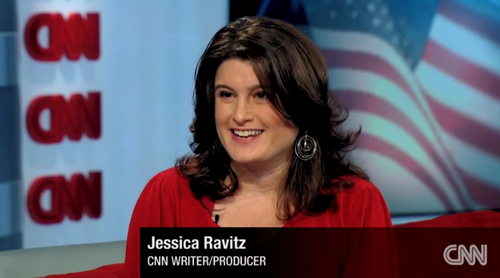CNN reporter comes to USU to talk about compassionate journalism
February 27th, 2013 Posted in OpinionBy Danielle Manley
The Utah Statesman
LOGAN—CNN enterprise reporter Jessica Ravitz will be on campus Wednesday at 11:30 a.m. in the Agricultural Science Building as part of the Morris Media and Society Lecture series.
 Ravitz is well known for her coverage of the mutilated Afghan teen Aesha that adorned the cover of TIME magazine in 2010. Shortly after her magazine debut, Aesha’s story was covered in-depth by Ravitz and published in CNN’s digital magazine.
Ravitz is well known for her coverage of the mutilated Afghan teen Aesha that adorned the cover of TIME magazine in 2010. Shortly after her magazine debut, Aesha’s story was covered in-depth by Ravitz and published in CNN’s digital magazine.
More locally, Ravitz is known as a former Salt Lake Tribune reporter who primarily covered religion. Her experience in reporting about religion in Utah will be the foundation for her lecture on reporting with patience, persistence and compassion.
Ravitz said she did various things to gain the trust of her interviewees, including participating in a trek with Mormon teenagers and hanging out with a Muslim Girl Scout group.
“It’s such a great entree into getting into people’s worlds and getting them to open up,” Ravitz said.
“People so desperately want them to understand what they believe and why they believe it, and if someone will sit down and talk and listen to them, they’ll talk.”
Fellow former Salt Lake Tribune reporter and USU journalism professor Matthew LaPlante experienced Ravitz’s reporting when he co-wrote a story with her in 2005.
The piece, entitled “Worlds Apart,” focused on the daily tasks of a soldier in Iraq, where LaPlante was embedded with a military unit. Ravitz observed and reported the same 24 hours with the soldier’s family in Utah.
The difficulty of making the lives of the soldier’s family seem interesting compared to his job in Iraq seemed apparent to LaPlante.
“It’s easy to make things interesting when you’re getting shot at or potentially shot at or chasing down trucks with insurgents,” LaPlante said. “It’s like a James Bond movie,”
To contrast, Ravitz spent close, intimate time with the soldier’s wife and two sons.
“She had a harder task,” LaPlante said. “She had to gain the family’s trust in a time that was very vulnerable. The kids sometimes threw fits. The mother would get frustrated. There was a relationship thing where one of the sons clearly had a better relationship with his father than the other. These were the things that clearly spoke to the difficulty.”
One of the most difficult jobs she did was reporting the conflict the soldier had with his sons.
“One of the kids was a very angry kid,” Ravitz said. “He’d had his formative years without his father around. One of the kids was a rah-rah soldier type who idolized his father. The other kid was a very sweet sensitive kid who didn’t like that. His dad probably thought he was a wuss.
“I knew writing about that would be hard for his parents to see, but I had to be honest about the kids and what I observed. The father said, ‘That was hard to see, but probably good for me to see.’ That was the part where I was most tentative and nervous, but i had to be honest about it.
Ravitz’s expertise lies in being able to report on delicate situations such as this family coping with their father being in Iraq or telling the story of disfigured woman from Afghanistan.
“It’s a wonderful story in the way she told it,” said Ted Pease, head of the department journalism and communication. “It was more than just this woman’s been disfigured by weird people in Afghanistan. It’s more about her and her struggle and her life. These are larger stories than just doing the who, what, when, where, why.”
A common problem found in the lives of journalists is getting so caught up with current events and deadlines that the bigger, broader stories are missed.
“Sometimes we get caught up the idea of daily journalism — what’s happening now, now, now,” LaPlante said. “We don’t know the line. When we fail to establish the line, we fail to see the broader stories, stories that materialize over weeks or months or years. Jessica could offer some strategies to recognize those stories, strategies to gain the trust of those involved in the story.”
In addition to offering insight on in-depth stories, Ravitz wants to give USU journalists hope for the future.
“There are so many assumptions about they way news is going,” Ravitz said. “I think the silver lining is that there will always be a need for good reporters and good writers.”
Pease emphasizes this idea with the increasing popularity of multimedia journalism.
“Jessica has taken what was a print career and moved it beyond the medium into something else,” Pease said. “Storytelling is something that can be translated across multiple media. She’s an example of how you can do that without either giving up quality or giving up your love of words and finding differing ways to tell a story that involve more than the traditional stereotypical avenues for journalists.”
TP
Tags: JCOM, Jessica Ravitz, journalism, Morris Media & Society Lecture

1 Trackback(s)
Sorry, comments for this entry are closed at this time.